Make warm, puffy homemade bao buns with ingredients you already have in your kitchen! These traditional Chinese steamed buns are delicious folded around savory fillings, and they’re so easy to make. I’ll even share how to do it without a steamer basket!
Stuff these soft steamed and serve them as a starting act for all your favorite Asian recipes. Try this salt and pepper chicken and shrimp lo mein for a tasty dinner that’s better than takeout.
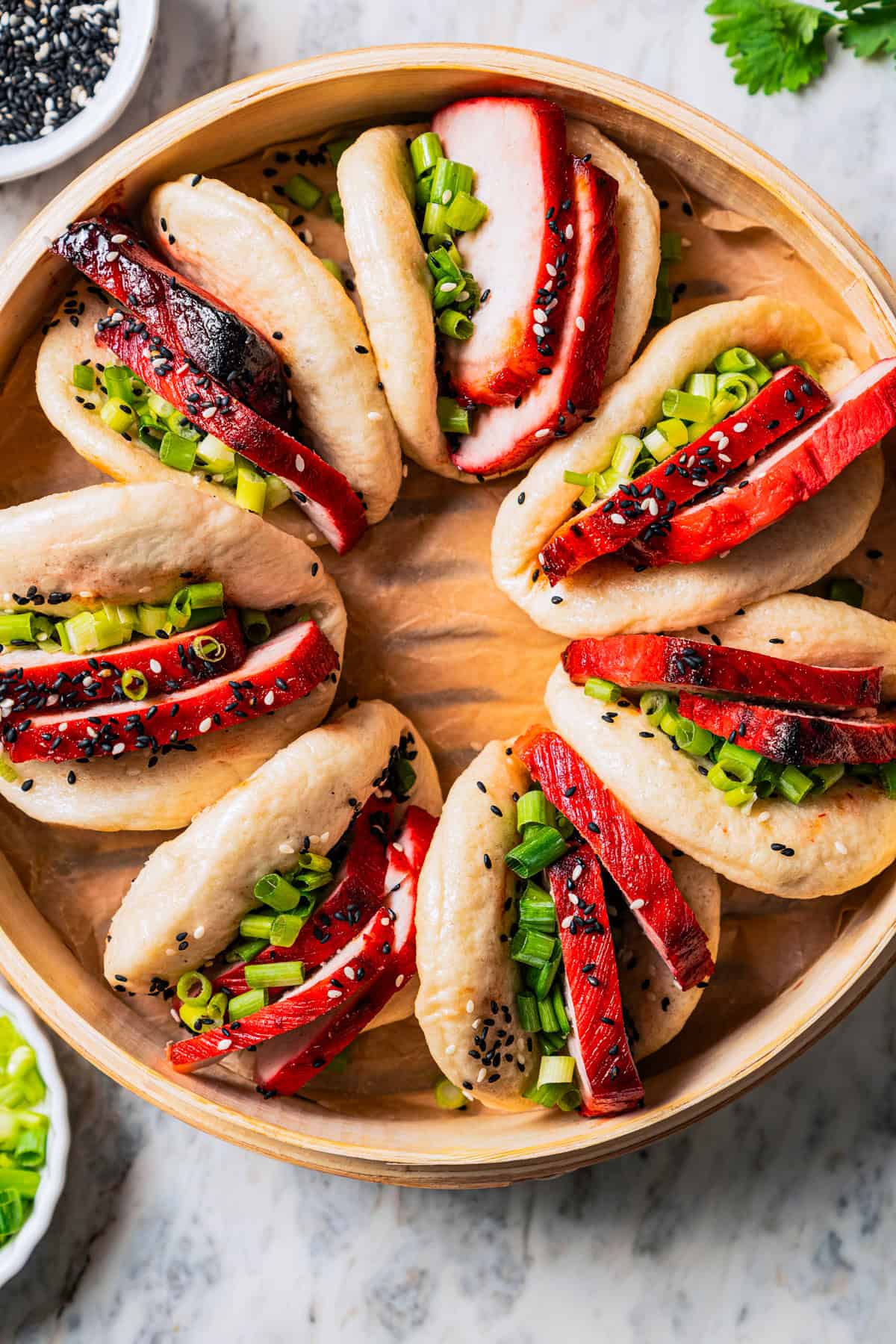
Bao buns (pronounced “bow”, as in “take a bow”) are warm and fluffy steamed buns made from sweet dough wrapped around some kind of filling. They’re a Chinese specialty, though not to be confused with the bao dumpling that goes by the same name! I made these puffy steamed bao buns at home recently and I was blown away by how authentic they turned out. They came out of the steamer pillowy soft, a bit sweet, and it was so easy! They held up great when I stuffed them full of the savory char siu pork I’d made for the occasion.
Why This Bao Buns Recipe Works
- Pantry ingredients. I had everything I needed to make homemade bao buns already in my kitchen. Chances are, you do too! This simple steamed buns recipe needs simple ingredients like flour, sugar, and yeast.
- Quick. Like other yeasted dough recipes, there’s a bit of hands-free rising time involved in making bao buns. But the hands-on steps are quick and relatively easy, even if you’re new to working with homemade dough.
- Perfectly puffed. I’ll show you how easy it is to steam these bao buns, with or without a bamboo steamer basket. If you follow the recipe just as it’s written, you’ll end up with big, puffed, perfect bao that’s ready for stuffing in minutes.

Ingredients You’ll Need
- Sugar – I recommend regular granulated sugar (or light brown sugar).
- Yeast – You’ll need active dry yeast. Check the dates on your yeast packets to make sure it’s fresh and not expired.
- Water and Milk – Both should be slightly warmed up, but no warmer than 110ºF.
- Flour – All-purpose works best here. I haven’t tested this recipe with gluten-free flour yet.
- Baking Powder – Not to be confused with baking soda. They aren’t the same! Like the yeast, make sure you’re using fresh baking powder.
- Oil – Canola oil, avocado oil, or another neutral-flavored vegetable oil.
How to Make Steamed Bao Buns
This bao recipe is super approachable, even if you’re just getting the hang of working with yeast. Below is a step-by-step overview of what you can expect when making bao buns from scratch. You’ll find the printable instructions in the recipe card.
Make the Dough
First, gather your ingredients (see above) and make a quick, stiff dough:
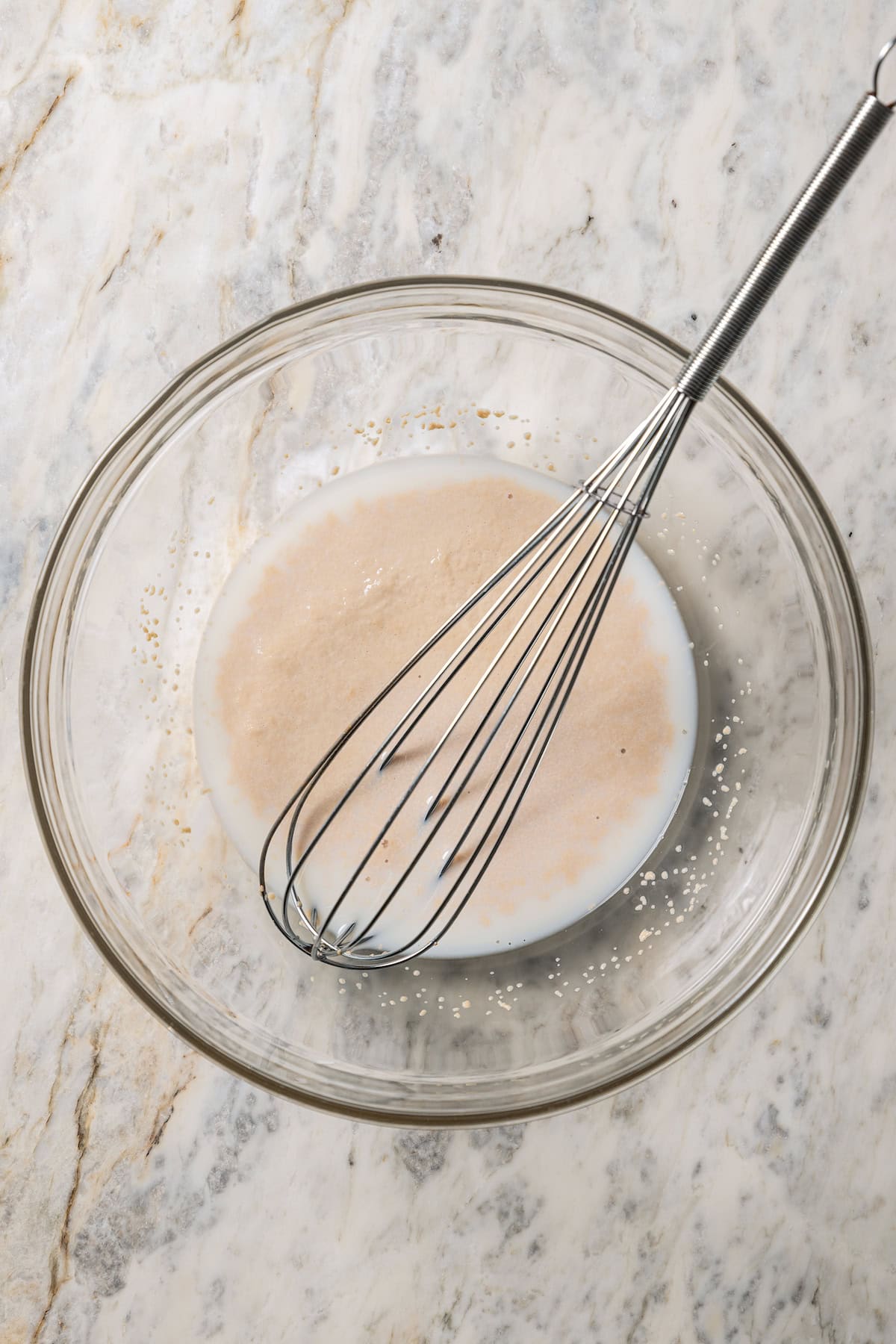
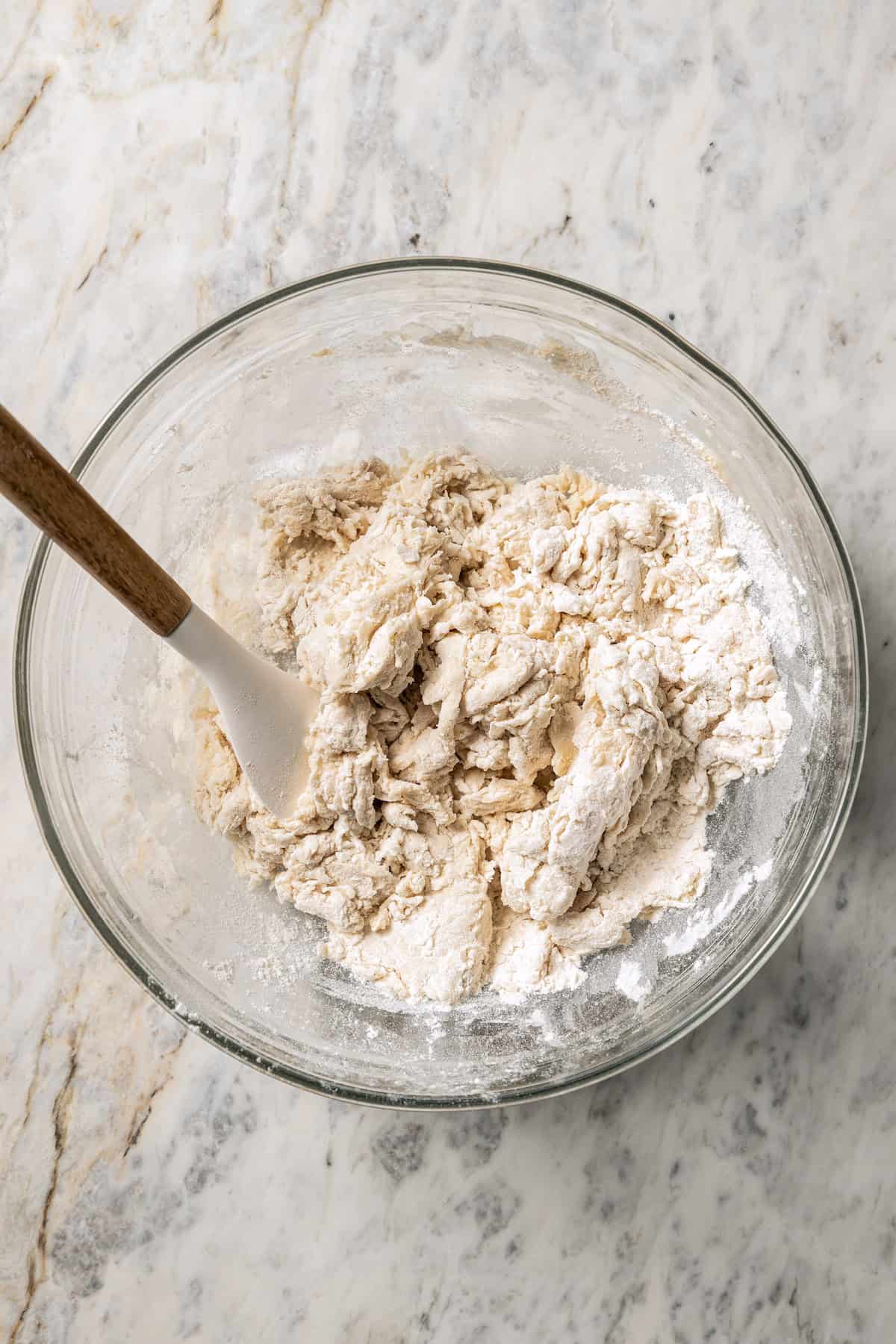
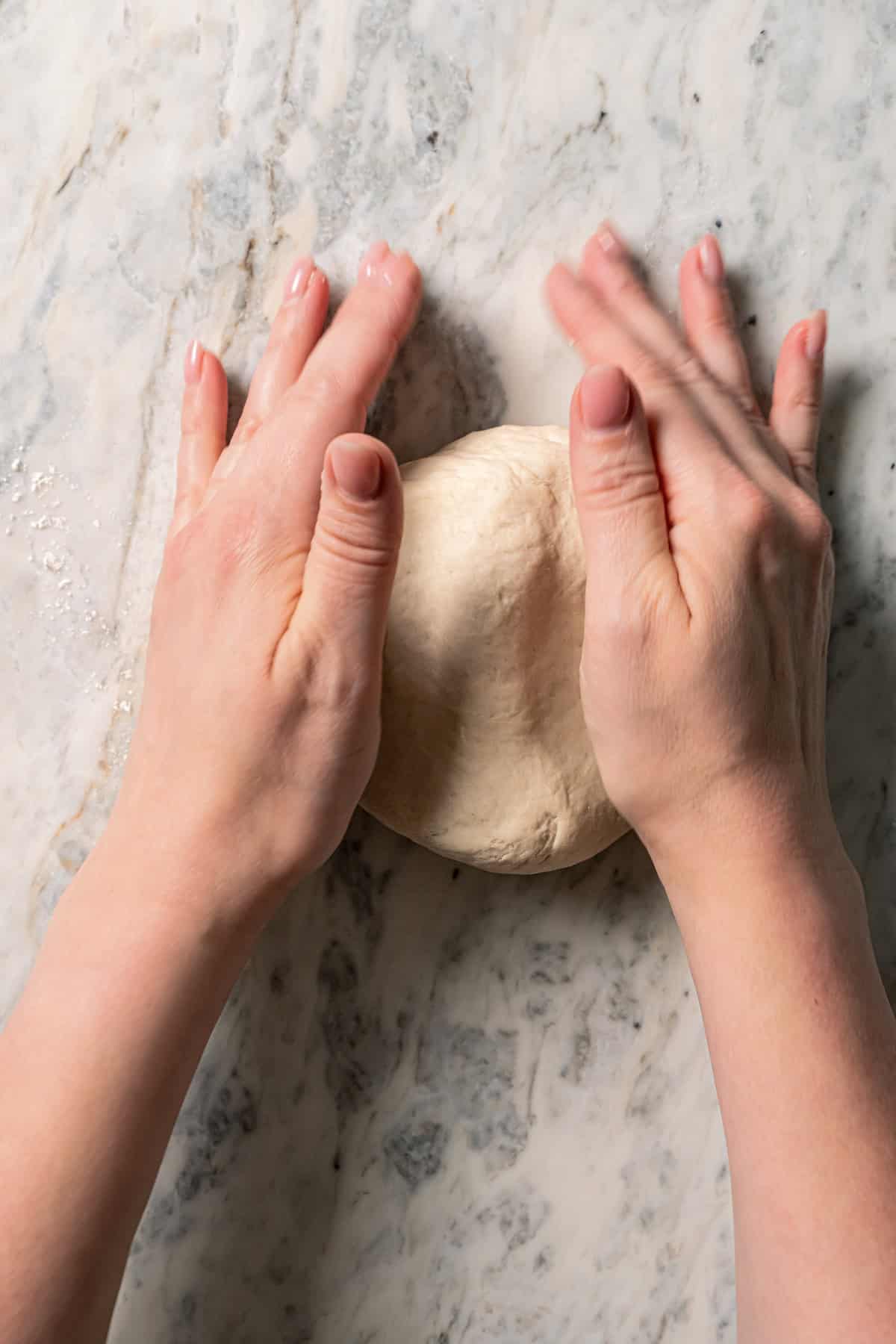
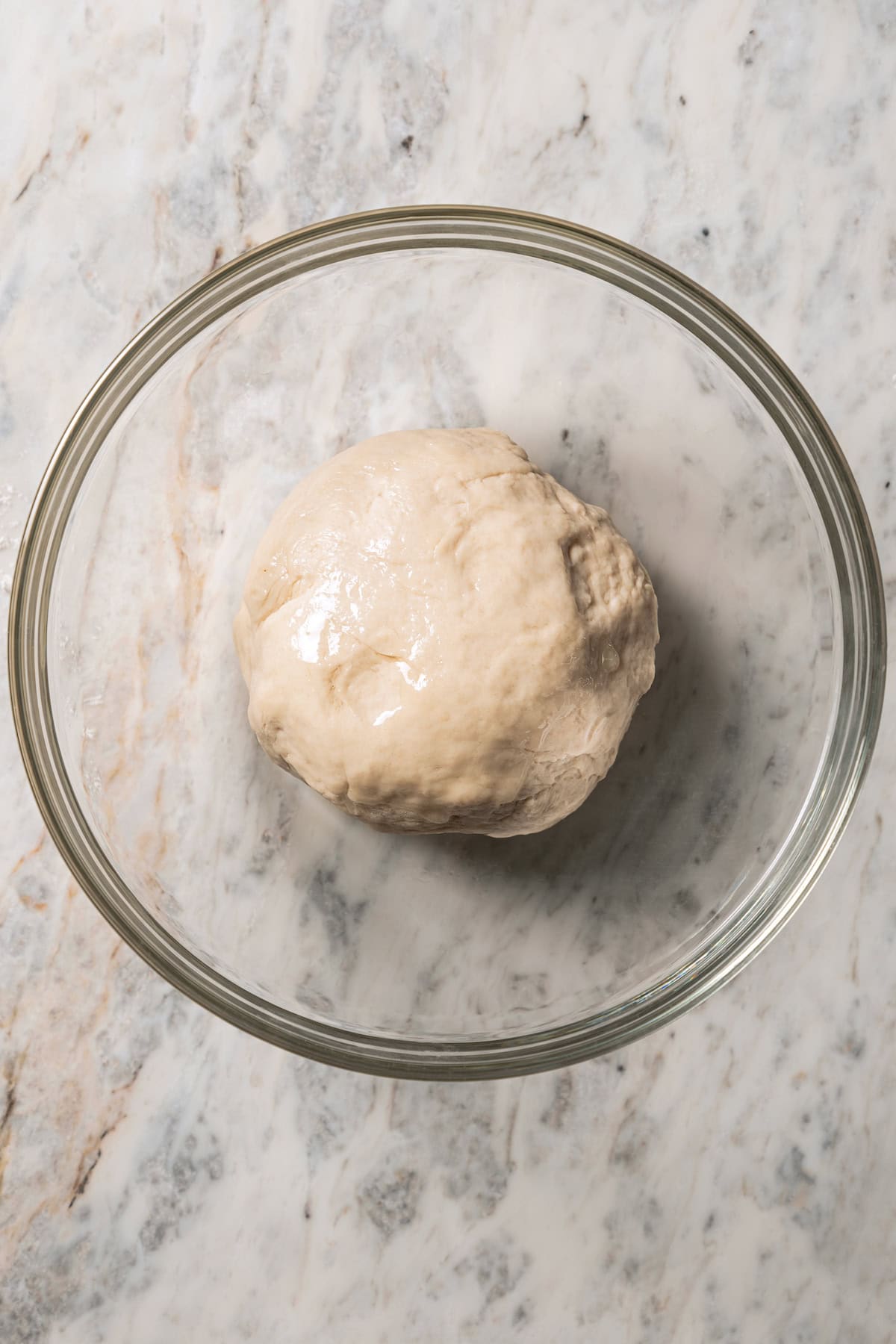
- Make the dough. Activate the yeast with sugar, warm milk, and warm water. Once that’s foaming, you’ll add the dry ingredients and mix to form the dough. Afterward, knead the dough on a floured surface until it’s smooth. It should spring back when you poke it.
- Let it rise. Place the dough ball into an oiled bowl. Cover and leave the dough somewhere warm to rise for 45-60 minutes.
Shape the Bao
Once your dough is ready, it’s time to roll and shape your bao buns. Rather than portioning the dough and rolling it out individually, my easy “hack” is to roll it all out at once and cut out the dough into rounds. Easy!

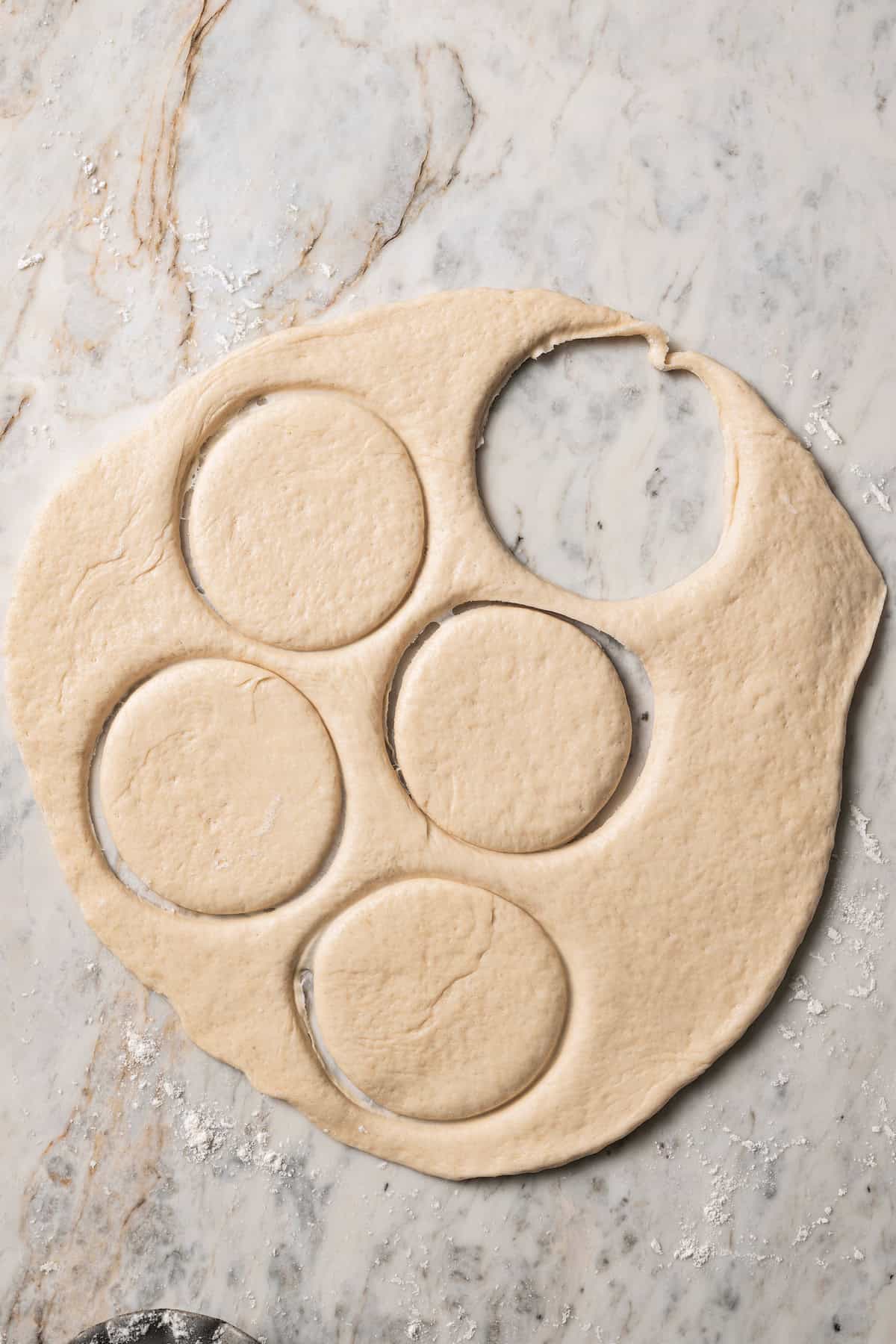
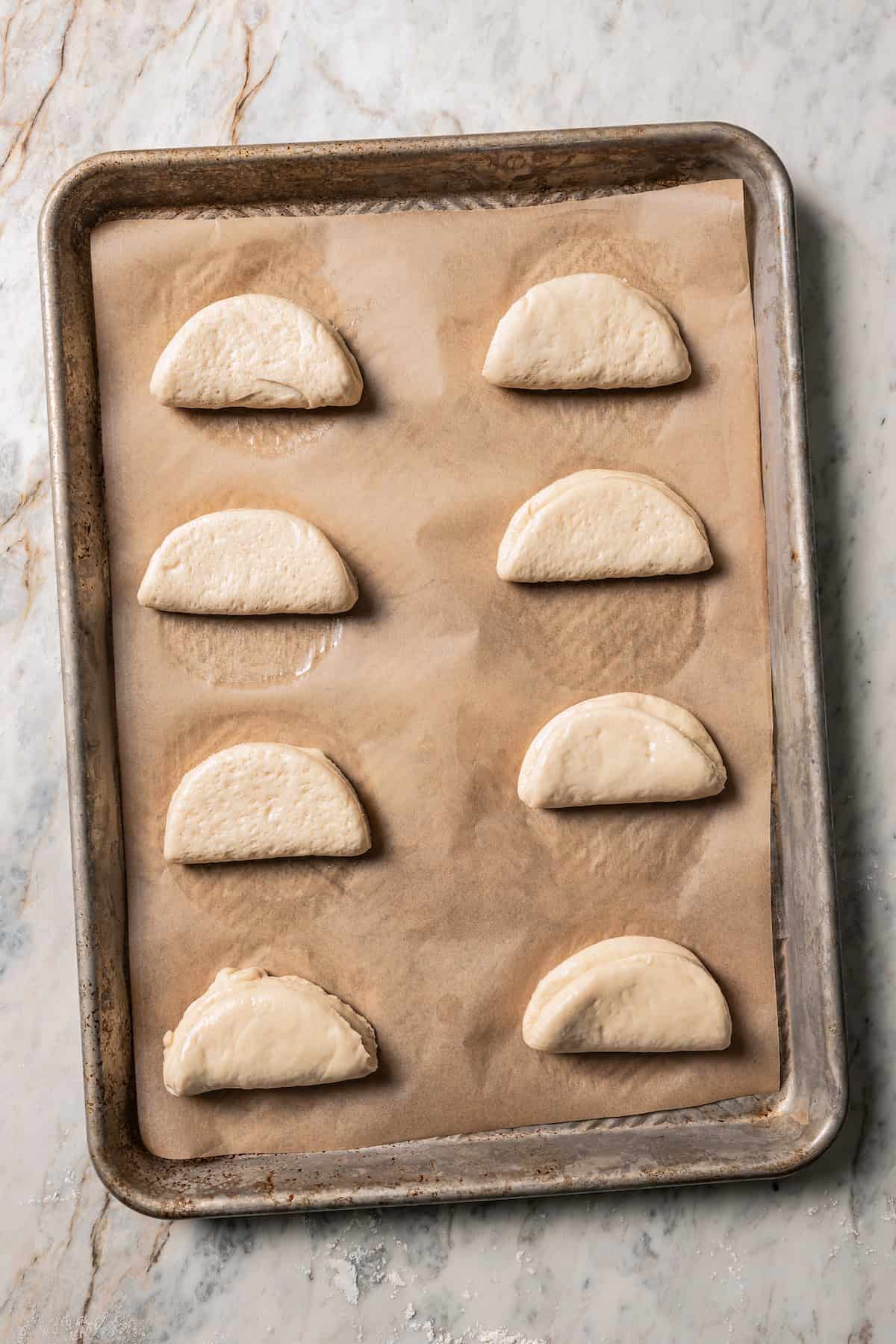
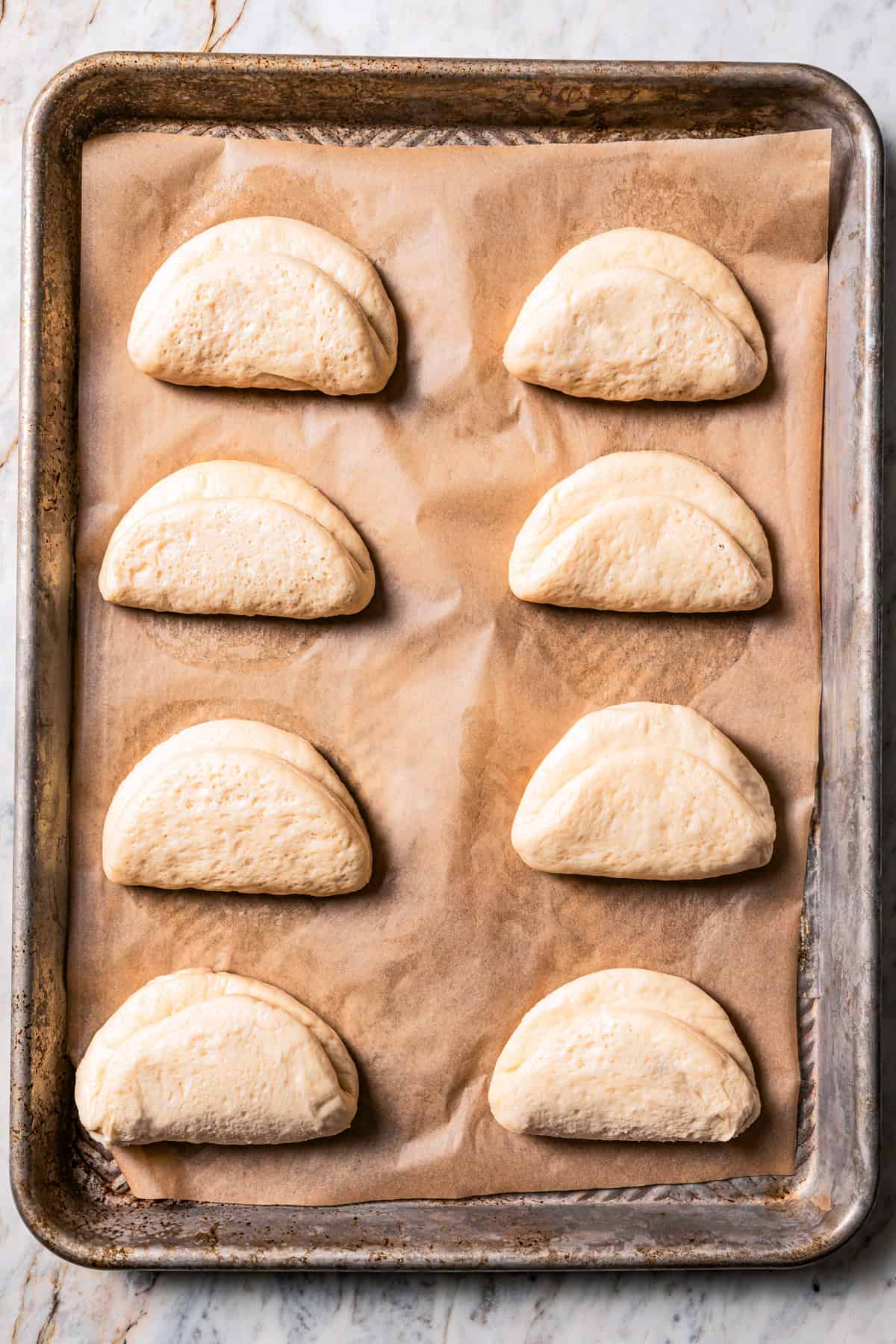
- Roll out and cut the dough. Now, roll the dough flat. Use something round, like a glass or a biscuit cutter, to cut out rounds of dough, moving them to a lined baking sheet.
- Fold the buns. Brush each round with oil and fold it into a half-moon. Your bao is starting to take shape! Afterward, cover the folded dough and let it rest for another hour.
Steam the Bao Buns
Last but not least, it’s time to get these bao buns to the sauna– I mean, steamer!

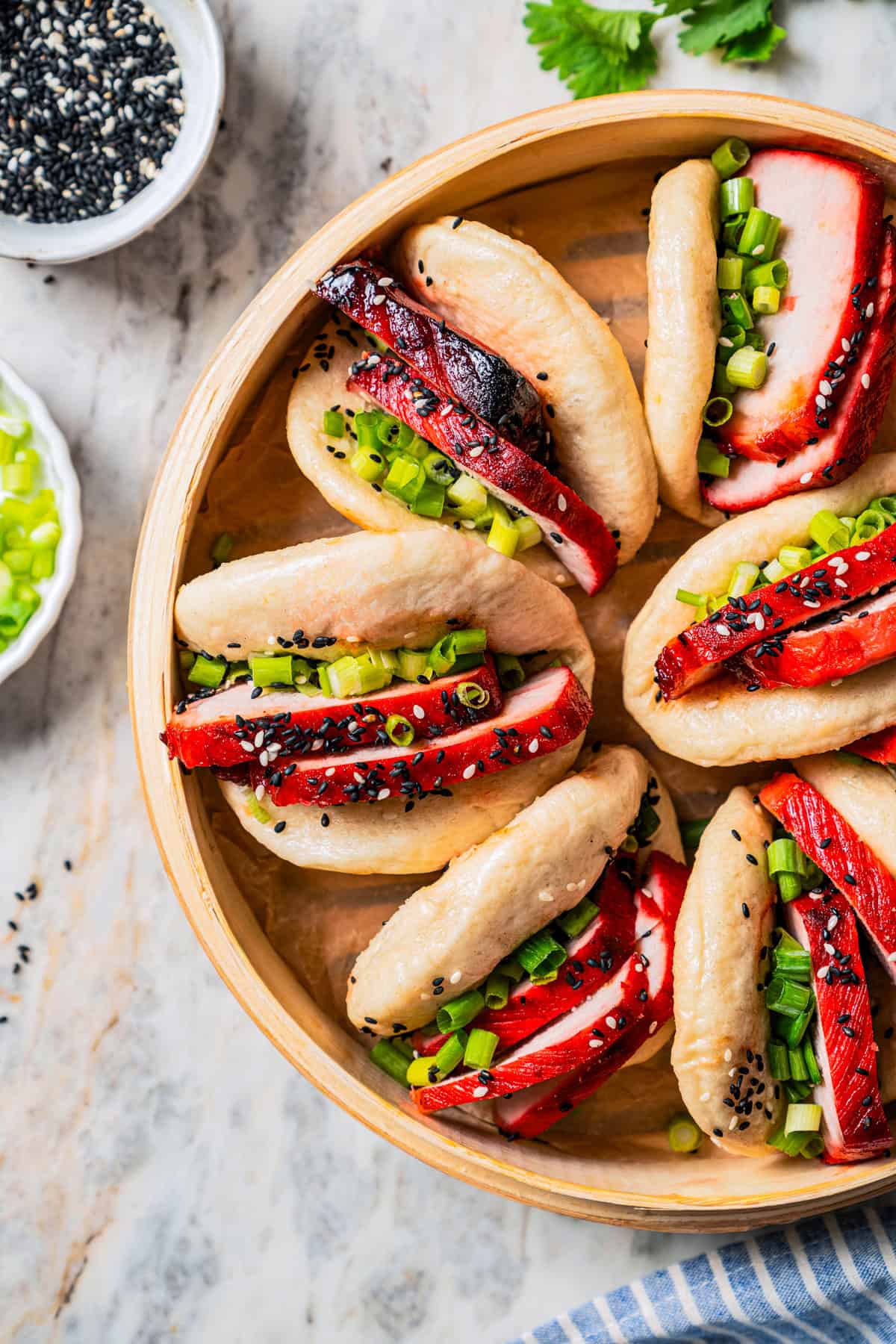
- Steam. Get water boiling below a steamer basket on the stovetop. Place the buns inside, cover the basket, and steam for 10 minutes. I usually have to do this in batches.
- Serve! Fill your freshly steamed bao buns with char siu pork or your choice of savory filling, garnish with green onions and sesame seeds, and enjoy. See below for tasty serving ideas.
What If I Don’t Have a Steamer Basket?
Before I bought my bamboo steamer basket, I used to McGyver a steamer using a lidded pot, a dinner plate, and the trivet from my Instant Pot (you can also use a round wire rack). It worked perfectly! Here’s how to steam without a steamer basket:
- Fill a large lidded pot or Dutch oven with about ½” of water, and place the trivet/rack into the pot. Make sure it doesn’t touch the water. Then, grease a heat-proof plate and place it over the rack.
- Bring the water to a boil. Transfer the bao buns to the plate inside the pot, close the lid, and steam.
Nowadays, I love my steamer basket and can’t recommend it enough, especially if you’re a fan of Asian cooking! I use it to steam everything from bao buns to shrimp shumai and dumplings.
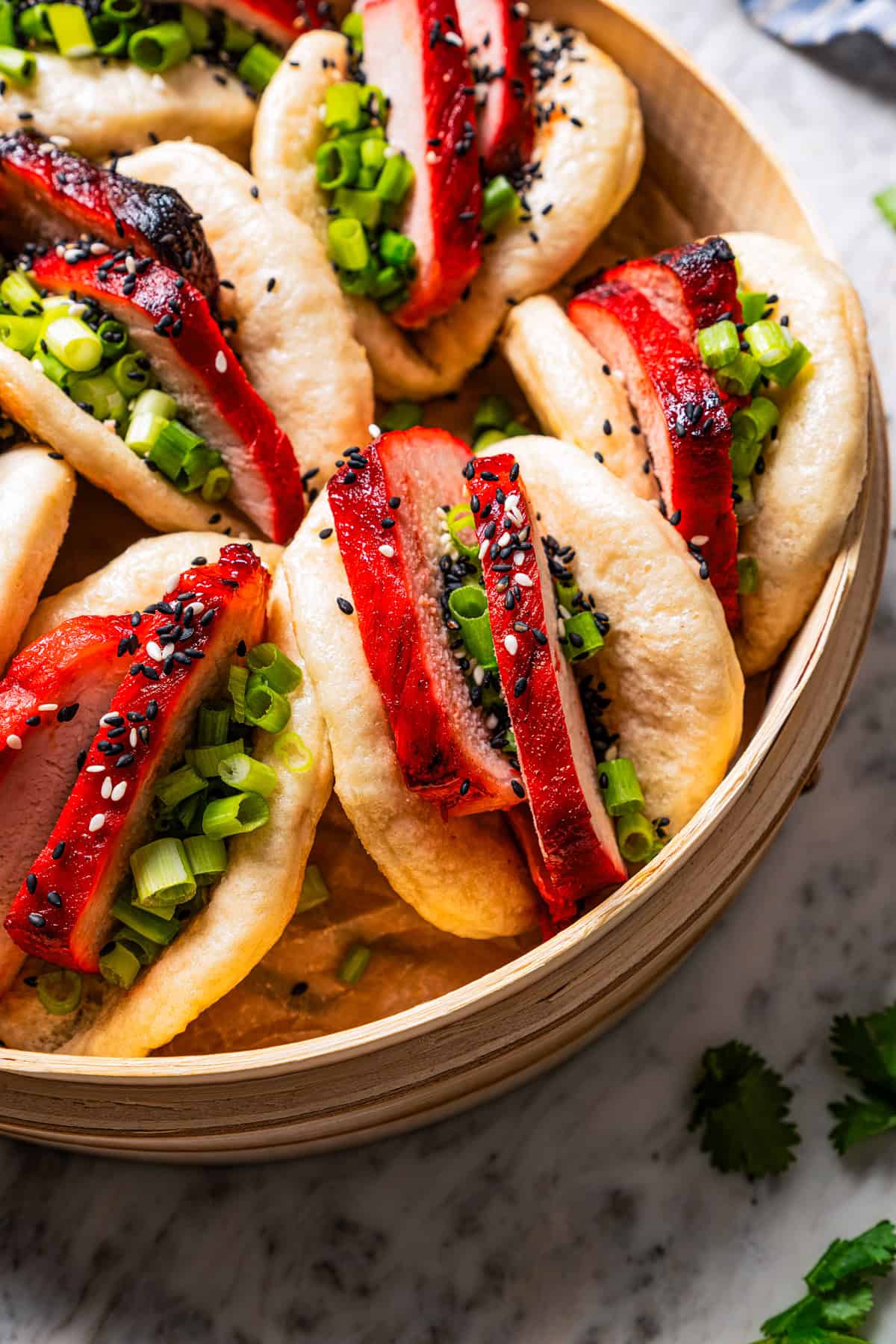
Recipe Tips
- The activated yeast should start to foam after 5-10 minutes. If it doesn’t, your yeast may be expired, or the temperature of the milk or water might be too hot (both shouldn’t be warmer than 110ºF). If this happens, you’ll need to start over again with fresh yeast.
- If the bao dough feels dry, add a spoonful of water at a time to help it come together. You want to end up with a smooth, stiff dough that springs back if you press it with your finger.
- Steam in batches. Be careful not to overcrowd the steamer basket, keeping in mind that the bao buns will puff up in the heat. You’ll likely need to steam the buns in batches. My steamer fits 4 at a time.
- Serve right away. These bao buns are best served fresh from the steamer! If you have extras, though, they store and freeze well. See below for storage tips.
Filling Ideas
I stuff my bao buns with fillings like juicy Chinese char siu pork and Korean beef bulgogi or chicken bulgogi. These pan-fried oyster mushrooms make a delicious vegetarian bao, too. Build your own bao buns with some of these delicious filling ideas:
- Protein. Beef, pork, chicken, tofu, or seafood, like shrimp or tuna steak.
- Veggies. Shredded lettuce, cabbage, or julienne vegetables like cucumbers, carrots, and bell peppers. Pickled vegetables, cabbage slaw, and kimchi are also good options.
- Sauces. Sriracha, chili oil, soy sauce, or borrow the spicy peanut dipping sauce from my vegetable spring rolls recipe.
- Garnishes. Chopped cilantro, basil, green onions, sesame seeds, chili flakes, and crushed peanuts.
Serving Suggestions
Homemade bao buns are great as a side dish or starter. I like serving them with Asian cucumber salad, spicy firecracker shrimp, or crispy crab rangoon. You can also round out a meal with a stir fry, like slurpy homemade ramen noodles or quick Mongolian chicken. I also love this easy shrimp fried rice! For a vegetable option, try sesame snap peas or bok choy, or these crunchy cucumber sushi rolls.
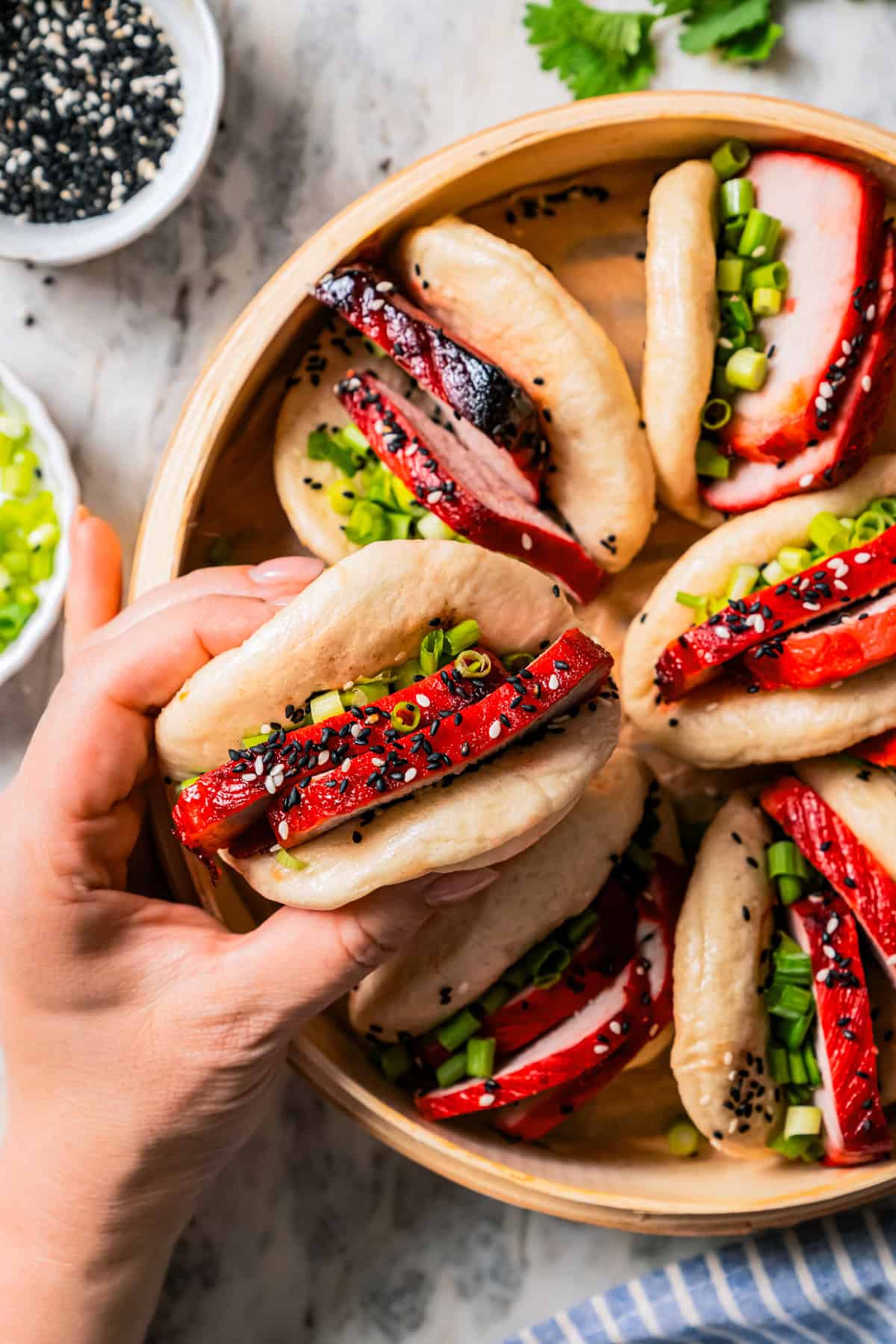
How Do You Store Bao Buns?
- Refrigerate. Store leftover steamed and cooled bao buns in an airtight container or resealable bag. Keep them in the fridge and reheat them within 3-4 days.
- Reheat. The best way to reheat bao buns is to cover and steam them for about 5-10 minutes until they’re puffed and springy again.
- Freeze. Freeze the steamed bao buns for up to 2 months and thaw them in the fridge before reheating. Otherwise, you can steam them from frozen, adding an extra minute or two to the steaming time.
More Asian-Inspired Recipes
Pin this now to find it later
-
Activate the yeast. In a large mixing bowl, whisk together the sugar, yeast, water, and milk. Let the mixture sit for 5-10 minutes or until foam appears at the top.
-
Add the dry ingredients. Mix the flour, baking soda, and salt into the yeast mixture. Mix until a ball of dough forms. Add more water if the dough feels dry.
-
Knead. Transfer the dough to a lightly floured surface and knead until smooth and elastic – it should spring back at you when poked.
-
Rise. Brush a bowl with vegetable oil and place the dough ball inside. Cover and let rise in a warm place for 45 minutes to 1 hour.
-
Cut. On a lightly floured surface, roll the dough to ~ ¼” thickness. Use a glass or a cookie cutter to cut the dough into 3 ½” rounds. Transfer the rounds to a baking sheet lined with parchment paper. Brush the rounds with oil and fold them in half to create half-moons. Press down on each half-moon lightly so that it stays folded. Cover with plastic wrap and let rest for 1 hour at room temperature.
-
Steam the buns. Bring 1-2 inches of water to a boil in a pan. Place a steamer basket over it. Transfer the buns to the steamer, being careful not to crowd the basket (you will likely have to steam in batches). Cover the steamer and steam the buns for 10 minutes.
-
Assemble. Stuff the bao buns with char siu pork (or your choice of filling), green onions, and sesame seeds, then serve.
- If you don’t have a steamer basket, add ½ inch of water to a large lidded pot and place a trivet (or rack) inside, ensuring it doesn’t touch the water. Grease a heat-proof plate and set it on the trivet. Bring the water to a boil, place the bao buns on the plate, cover the pot with a lid, and steam.
Calories: 97kcal | Carbohydrates: 20g | Protein: 3g | Fat: 1g | Saturated Fat: 0.2g | Polyunsaturated Fat: 0.1g | Monounsaturated Fat: 0.1g | Cholesterol: 1mg | Sodium: 4mg | Potassium: 65mg | Fiber: 1g | Sugar: 2g | Vitamin A: 12IU | Vitamin C: 0.001mg | Calcium: 24mg | Iron: 1mg
Nutritional info is an estimate and provided as courtesy. Values may vary according to the ingredients and tools used. Please use your preferred nutritional calculator for more detailed info.


